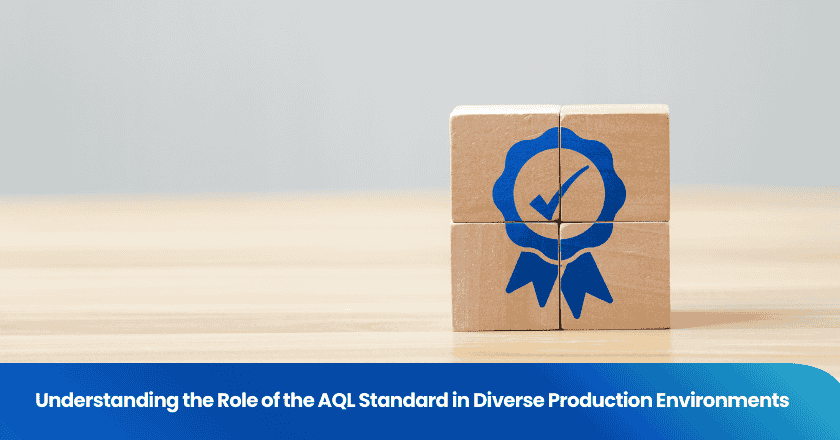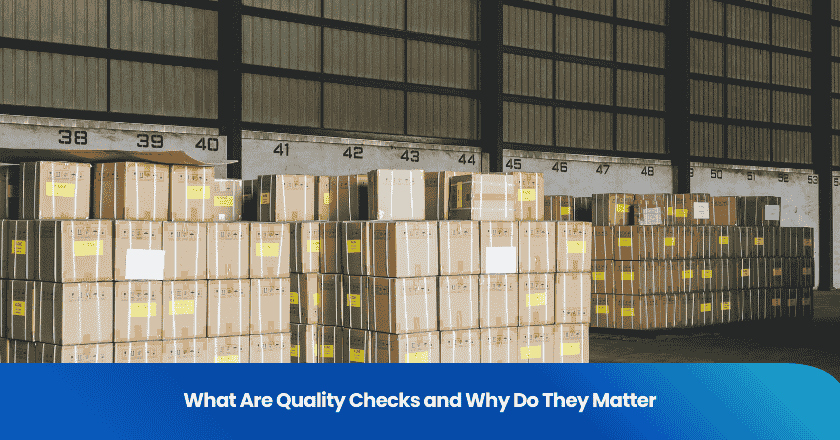
The aql standard plays a vital role in shaping quality expectations for each customer. Companies in different industries rely on this systematic, risk-based method to manage product defects and meet customer requirements. The aql standard allows organizations to balance quality, cost, and compliance while adapting to unique production challenges. Each customer presents distinct needs, making flexibility essential for maintaining trust and satisfaction.
Key Takeaways
- The AQL standard sets clear limits on acceptable defects to help companies maintain product quality and meet customer needs.
- Different industries use tailored AQL levels to balance safety, cost, and inspection efforts based on product risks.
- AQL sampling plans guide inspectors to check products efficiently and decide if batches pass or fail quality checks.
- Using AQL helps companies reduce waste, control costs, and build customer trust by focusing on critical quality issues.
- Regular training and continuous improvement ensure AQL processes stay effective and adapt to changing production demands.
AQL Standard Overview
What Is Acceptable Quality Level
The acceptable quality level, often called the AQL standard, defines the maximum number of defective items considered acceptable during random sampling of a production lot. This concept helps organizations determine when to accept or reject a batch of products. The acceptance quality level serves as a benchmark for quality assurance teams. They use it to set clear expectations for suppliers and production lines.
AQL standard sampling plans, such as those outlined in ISO 2859-1, guide inspectors in selecting the right number of samples from each lot. These plans specify how many defects are allowed before a lot fails inspection. For example, a company may set an AQL standard of 1.5% for critical defects. If the number of defective items in the sample exceeds this threshold, the entire lot is rejected. This approach ensures that only products meeting the required quality reach customers.
Note: The AQL standard does not guarantee zero defects. Instead, it balances the risk between producers and buyers by defining acceptable limits.
Importance of AQL
The importance of AQL extends across many industries. Companies rely on the AQL standard to maintain consistent product quality while controlling inspection costs. This method supports quality assurance by providing a structured way to evaluate production lots.
- Manufacturers use the AQL standard to minimize the risk of defective products reaching the market.
- Regulatory bodies recognize the importance of AQL in ensuring compliance with safety and quality standards.
- The AQL standard allows organizations to adapt inspection levels based on product type, customer requirements, and risk tolerance.
The importance of AQL lies in its ability to offer a practical, data-driven approach to quality control. It helps organizations make informed decisions, reduce waste, and build customer trust.
AQL in Industrial Engineering
Manufacturing Applications
Manufacturing stands at the core of industrial engineering. Companies use aql in industrial engineering to set clear standards for product quality. Production lines often face high volumes and tight deadlines. Quality teams rely on aql sampling plans to inspect batches efficiently. For example, a factory producing automotive parts may select a specific aql for different products based on safety requirements. Inspectors check samples for defects and decide if the lot meets the acceptance criteria. This process helps manufacturers deliver reliable products while controlling costs.
Tip: Consistent use of aql in industrial engineering reduces the risk of defective items reaching customers and supports compliance with industry regulations.
Electronics Industry
The electronics sector presents unique engineering challenges. Devices must meet strict performance and safety standards. Companies apply aql in industrial engineering to manage quality across complex supply chains. Inspectors use aql sampling plans to evaluate circuit boards, connectors, and finished devices. The selection of aql for different products depends on their function and risk level. For instance, critical components in medical devices require lower defect thresholds than consumer gadgets. This approach ensures that only products meeting high standards enter the market.
| Product Type | Typical AQL Level | Inspection Focus |
|---|---|---|
| Consumer Electronics | 1.5% | Functionality, Safety |
| Medical Devices | 0.65% | Reliability, Accuracy |
Pharmaceuticals
Pharmaceutical engineering demands rigorous quality control. Companies must comply with strict regulations to protect patient safety. Aql in industrial engineering guides the inspection of tablets, capsules, and packaging materials. Inspectors use aql sampling plans to check for contamination, incorrect labeling, and physical defects. The choice of aql for different products reflects the potential impact on health. For example, injectable drugs require the lowest defect rates. This system helps pharmaceutical firms maintain trust and meet regulatory standards.
Textiles and Footwear
Textiles and footwear industries rely on engineering principles to balance quality and efficiency. Production involves diverse materials and processes. Companies use aql in industrial engineering to set inspection criteria for stitching, color consistency, and material strength. Aql sampling plans help teams identify defects before products reach stores. The selection of aql for different products varies by market expectations. High-end fashion items demand stricter quality levels than mass-market goods. This strategy supports brand reputation and customer satisfaction.
Common textile defects include:
- Uneven dyeing
- Loose threads
- Incorrect sizing
Food and Bulk Production
Food and bulk production require careful engineering to ensure safety and consistency. Companies apply aql in industrial engineering to inspect packaging, labeling, and product integrity. Aql sampling plans guide inspectors in checking for contamination and physical defects. The choice of aql for different products depends on health risks and regulatory requirements. For example, ready-to-eat meals need lower defect rates than bulk grains. This approach helps producers deliver safe food and comply with industry standards.
Note: Effective use of aql in industrial engineering supports continuous improvement and reduces waste across all sectors.
Defect Control with AQL
Types of Defects
Quality control processes in production environments rely on clear definitions of defect types. The AQL inspection process classifies defects into three major categories: critical, major, and minor. Each category reflects the impact on product safety, function, or appearance.
- Critical defects pose safety risks or violate regulations. These defects require immediate action and strict rejection.
- Major defects affect usability or performance. Customers may reject products with major defects, so companies set low tolerance levels.
- Minor defects do not impact function but may reduce visual appeal. Companies often allow a small number of minor defects within the AQL inspection.
A random sample inspection helps identify the frequency and severity of each defect type. Quality control teams use this data to adjust processes and prevent recurring issues. By focusing on major and critical defects, organizations protect their reputation and meet industry standards.
Note: Consistent classification of defect types supports effective quality control processes and ensures reliable results during random sample inspection.
Sampling and Inspection
The AQL inspection process uses random sample inspection to evaluate product defects in a production lot. Inspectors select a random sample size based on established quality control processes. They examine each item for critical, major, and minor defects. The results determine if the lot passes or fails.
A typical random sample inspection follows these steps:
1. Define the lot size and select the sample using AQL guidelines.
2. Inspect each item for all defect categories.
3. Record the number and type of defects found.
4. Compare results to the acceptance criteria for major and minor defects.
Quality control processes depend on accurate sampling and thorough inspection. The AQL inspection process ensures that only acceptable lots move forward. This approach reduces the risk of product defects reaching customers and supports continuous improvement in quality control.
AQL Levels and Selection
Assessing Risk
Quality professionals use aql calculation to determine the appropriate sampling levels for each production lot. They consider the potential impact of defects on product safety and customer satisfaction. When teams select sampling levels, they analyze historical defect rates and the severity of possible failures. Aql tables provide guidance for choosing the right sample size and acceptance criteria. These tables help inspectors balance the risk of accepting defective products against the cost of inspection.
Process validation plays a key role in risk assessment. Teams validate manufacturing steps to ensure consistent quality before applying aql calculation. They review acceptance probability to estimate the chance that a lot meets quality standards. By combining process validation with aql tables, organizations create robust inspection plans. This approach reduces the likelihood of critical defects reaching customers.
Tip: Use aql calculation and sampling levels to align inspection intensity with product risk. This strategy supports effective process validation and protects brand reputation.
Industry Standards
Industry standards shape the selection of sampling levels and aql tables. Regulatory agencies publish guidelines for process validation and inspection procedures. For example, ISO 2859-1 outlines standard aql tables and sampling levels for various industries. Companies follow these standards to ensure compliance and maintain product quality.
Aql calculation helps organizations meet industry requirements for acceptance probability. Teams consult aql tables to select sampling levels that match regulatory expectations. Process validation confirms that production methods consistently deliver acceptable quality. By adhering to industry standards, companies demonstrate commitment to safety and reliability.
| Industry | Common Sampling Levels | Typical AQL Tables Used |
|---|---|---|
| Electronics | Level II | ISO 2859-1 |
| Pharmaceuticals | Level III | ISO 2859-1, FDA |
| Textiles | Level I | ISO 2859-1 |
Quality teams rely on aql calculation, sampling levels, and aql tables to meet industry standards. They use process validation to support continuous improvement and ensure that acceptance probability remains within acceptable limits.
Benefits and Challenges
Cost vs. Quality
Organizations often face a delicate balance between cost and quality in their quality management systems. The benefits of using aql become clear when companies seek to optimize inspection resources without sacrificing product standards. By applying aql, teams can focus on the most critical aspects of production, which helps reduce unnecessary inspections and lowers operational costs. This approach supports quality control strategies that target high-risk areas, ensuring that the customer receives products that meet expectations.
The benefits of using aql also include improved efficiency in quality management. Teams can allocate resources more effectively, which leads to faster decision-making and reduced waste. When companies implement aql, they often see higher satisfaction among customers because products consistently meet agreed-upon standards. However, organizations must remain vigilant. If inspection levels drop too low, the risk of defects increases, which can harm customer satisfaction and damage reputations.
Tip: Companies should regularly review their quality control strategies to maintain the right balance between cost savings and product quality.
Regulatory Considerations
Regulatory requirements play a significant role in shaping quality management systems. Many industries must comply with strict guidelines to ensure product safety and reliability. The benefits of using aql extend to regulatory compliance, as aql provides a structured framework for inspection and documentation. This structure helps organizations demonstrate their commitment to quality management and customer satisfaction during audits.
Quality management systems that incorporate aql align with international standards, making it easier for companies to operate in global markets. The benefits of using aql also include streamlined reporting and traceability, which regulators often require. By adopting robust quality control strategies, organizations can reduce the risk of non-compliance and build trust with both customers and authorities.
Note: Effective quality management systems not only protect the customer but also support long-term business success.
Best Practices for AQL Implementation
Setting Up AQL
Successful aql implementation starts with a clear understanding of production goals and quality requirements. Teams should define product specifications and identify critical control points. They select appropriate aql tables based on industry standards and product risk. Quality managers train inspectors to use these tables correctly. They also establish clear communication between production and quality teams.
A step-by-step approach helps organizations avoid confusion:
1. Identify product categories and risk levels.
2. Choose the right aql tables for each category.
3. Set acceptance criteria for critical, major, and minor defects.
4. Train staff on inspection procedures and documentation.
5. Monitor inspection results and adjust sampling plans as needed.
Tip: Regularly review aql implementation procedures to ensure they match current production needs and regulatory changes.
Continuous Improvement
Aql implementation does not end after initial setup. Teams must focus on ongoing improvement to maintain high standards. They analyze inspection data to spot trends and recurring issues. This analysis helps them refine sampling plans and defect criteria. Quality teams should encourage feedback from inspectors and production staff.
Common obstacles include resistance to change and inconsistent inspection methods. Leaders can overcome these by providing clear guidelines and ongoing training. They should also use data from aql implementation to drive process improvements.
| Challenge | Solution |
|---|---|
| Inconsistent sampling | Standardize aql implementation |
| Staff turnover | Provide regular training |
| Changing regulations | Update aql tables as needed |
Note: Continuous improvement in aql implementation builds a culture of quality and helps organizations adapt to new challenges.
- The AQL standard helps organizations deliver consistent quality and manage risk in many industries.
- Teams must tailor inspection plans to meet the needs of each customer and production environment.
- Ongoing training and adaptation support high levels of customer satisfaction as standards change.
- Quality professionals should review processes regularly and promote continuous improvement for every customer.
Continuous focus on the acceptable quality level strengthens trust and drives better outcomes for the customer.
FAQ
What does AQL stand for?
AQL stands for Acceptable Quality Level. It represents the maximum number of defective items allowed in a sample before a batch is rejected during quality inspection.
How do companies choose the right AQL level?
Quality teams assess product risk, customer requirements, and industry standards. They select an AQL level that balances inspection costs with the need for reliable, safe products.
Can AQL guarantee zero defects?
No, AQL does not guarantee zero defects. It sets acceptable limits for defects in a batch, helping companies manage risk and maintain consistent quality.
Why do different industries use different AQL levels?
Each industry faces unique risks and quality expectations. For example, pharmaceuticals require stricter AQL levels than textiles due to safety concerns.
What happens if a batch fails the AQL inspection?
The company may:
- Reject the batch
- Rework the products
- Conduct further inspections
This process ensures only products meeting quality standards reach customers.
Grow your business with TradeAider Service
Click the button below to directly enter the TradeAider Service System. The simple steps from booking and payment to receiving reports are easy to operate.



